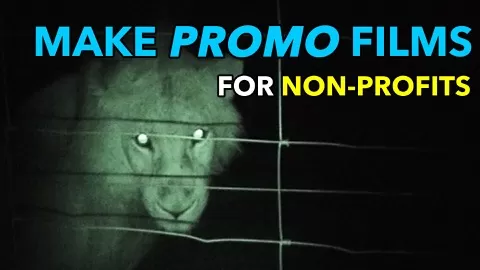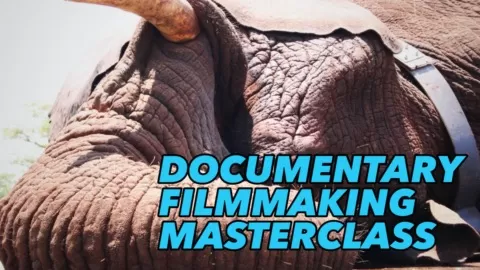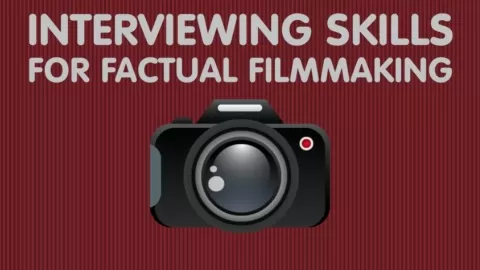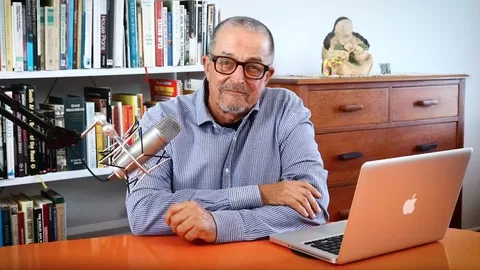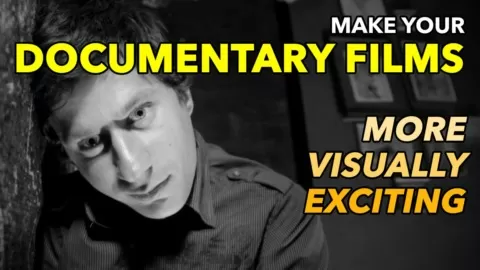There are three PRACTICAL EXERCISES for the class project.
PRACTICAL EXERCISE 1 – MEETING YOUR NGO AND TAKING A BRIEF
- STEP 1: SELECT AN NGO,
- STEP 2: MAKE YOUR INITIAL APPROACH,
- STEP 3: WRITE YOUR BRIEF.
STEP 1: SELECTING AN NGO. When choosing who to make a film for, my advice is to start your filmmaking process by taking a look at your own interests and then find one or more NGO’S that work in the range of those interests. Find the thing you have a passion for. Think about it carefully because it is a real bonus to work with an NGO that you share a passion with.
STEP 2: MAKING YOUR INITIAL APPROACH. Part of your first contact with your chosen NGO will involve the matter of being paid for your services as a filmmaker or not. And it’s a sliding scale – payment could be in cash or facilities and services your NGO can provide. You need to negotiate this one.
Few NGO’s are going to say NO when you tell them that you want to make a film for them. However any film you make will have costs involved. And although you don’t have to bankrupt yourself – or your NGO – the technical aspects of your film – that is the video and audio quality – as well as crafting the film in the edit suite should be of a sufficiently high standard to ensure that the film does not damage your or your NGO’s image and reputation. So do not compromise on quality.
But having said that my advice is to always be flexible on payment. Just make sure the deal you agree to with the NGO is made before you start working on your film.
Here are a few points on deciding whether to get paid for your filmmaking or not.
- What is your level of expertise in promotional filmmaking. If you do not have a show-reel yet consider doing the film free of charge. In the process you will gain experience and you will have a new film for your show-reel.
- Many of the smaller NGOs only have volunteers working with them. So you volunteering your services will probably be greatly appreciated.
- In addition if you are not paid you can save yourself from people placing undue pressure in terms of delivery deadlines and other production issues. You could find that the moment a client pays you the demands in terms of the film could become tough. Maybe you can do without added pressure the first few times around.
- On the other hand there’s no reason why your NGO should not pitch in some of the expenses. Talk to them about their side covering your transport and/or accommodation costs. They can also buy you a piece of equipment you need. Be flexible.
Just make sure you raise the payment issue before you start getting into serious filmmaking. Once you have decided about payment, it’s time to take a brief from your newly found client.
STEP 3: WRITING YOUR BRIEF. OK so you’ve decided whether your film will be paid for or not – and your NGO has accepted your offer to make a film – now what’s the next step? It’s time to take a brief!
Let’s succinctly run through a few headings you will use when taking this brief.
A client brief is at the heart of understanding what the film will do for your NGO and also what is expected from you.
Here are the headings.
- WHAT WAS/IS THE PROBLEM – Why did the people who founded your NGO feel it was important enough to start an organization. Get as much information about what the problem is because this will form the heart of the film.
- WHAT ARE YOUR NGO’S OBJECTIVES – how does the NGO intend solving the problem identified above. This is also important because here you need to establish what the NGO has achieved since starting up.
- WHAT OUTCOME DOES THE NGO WANT FROM YOUR FILM – It is important to establish right at the outset what the NGO will expect from your film. What do they want it to do.
- THE NGO MARKETING STRATEGY AND YOUR FILM – You should also find out what their overall marketing strategy is and does/will your film fit in somewhere. Maybe they want to initiate a new marketing project with your film at the center.
- LOGISTICS – Where does your NGO operate from, where are the locations that you will need to shoot at, what are the distances you will need to travel, when will be the best times to film, are there special events planned that need to be covered.
- TIMEFRAMES FOR THE PRODUCTION – Where will you need to film, when does the NGO want the film to be completed, can this all be realistically achieved in the time you have available.
- INVESTIGATE FUNDING – Are you being paid, what are you liable for in the production of the film and what will the NGO cover/provide.
Once you have completed these steps then proceed with PRACTICAL EXERCISE 2.
PRACTICAL EXERCISE 2 – WRITING YOUR PROPOSAL
Now that you have taken a detailed brief from your NGO client, use that material to develop your film proposal that you will present to your client. Here are some headings you can use to outline how you intend approaching the film. Please feel free to add as many additional headings as you think are necessary. What I have here is only a guideline.
TITLE YOUR FILM
WHO IS YOUR CLIENT
OVERVIEW OF THE FILM PROJECT
THE OUTLINE OF THE FILM
THE TREATMENT
- The overall approach to the film.
- The visual style of the film.
- Graphic representations.
DISTRIBUTION AND AUDIENCE
FUNDING FOR THE NGO
LOGISTICS, PRODUCTION SCHEDULE AND TIMELINE
FILM BUDGET
CREW MEMBER BIO’S
Summing up this exercise: When you have completed this proposal, discuss it with your client and obtain their agreement for you to continue. After that then proceed with PRACTICAL EXERCISE 3.
PRACTICAL EXERCISE 3 – WRITE YOUR SCRIPT
When you craft your script, make sure it is full of the people and events that are touched by the workings of your NGO. And initially you might find it a tough task to convince your NGO that the film is more about the benefits of their work than about the people who work there. Your promotional film is about the people’s lives that they touch, about the animals that they save and/or about the environment they protect.
Make sure your NGO understands that the film you are making must tell a bigger story than simply them talking about their ideas and ideals. You need to develop a NARRATIVE or STORYLINE showing what has been done and how this has affected lives.
Some NGO promotional films simply show several talking heads giving us an explanation of what they do. Now and then we see some background material about their day-to-day activities. If there is nothing out of the ordinary in your film and what people are saying is simply a rehash of what has been said before then you are going to have a hard time getting people to watch your film your film.
Like almost all stories, there are three parts to your script. An Introduction, a Middle and a Conclusion. Use your
- handout materials,
- the brief you took from your NGO,
- the proposal you wrote for your film and
- any notes you took during the lessons.
- and also browse more stuff from the Internet that relates specifically to the workings of your chosen NGO.
Then use all of these to write and formulate your script. Make use of the following breakdown template to guide you in your script writing.
INTRODUCTION FOR YOUR PROMOTIONAL FILM (30 seconds to 1-minute duration)
In this section the problem is laid out for the viewer. It has to capture the attention – this is the first challenge to create engaging content. What will make the viewer stay to watch the whole film. Well I would say use you best video material here and/or create some serious curiosity that will entice the viewer to watch more.
Many viewers enjoy NGO content because it is real. They get to meet people and experience situations they might not otherwise have encountered. And that’s why you need to make content that leaves your viewers with something they will remember.
MAIN BODY OF THE PROMOTIONAL FILM (2-3-minutes duration)
In the Introduction section we got the viewer interested. But getting them interested and holding their interest is not the same thing. This section is the substance part of your film. Here you expand your story, unpacking your narrative, answering some of the questions.
In this section we look at the problem in a wider context. Focus on the macro issues – maybe bring in an international perspective that will show it’s not a local and isolated issue. This section introduces more details of why this is a problem.
CONCLUSION FOR YOUR PROMOTIONAL FILM (30 seconds to 1-minute duration) This is the part that determines the final message you want to leave your viewers with – what do you want them to feel and perhaps even do after watching your film.
And there you have it – your completed script. From here you can start drawing up you detailed shot-list before proceeding to shoot your film.
SOME FINAL THOUGHTS. Make sure that the film you are going to make for your NGO will be captivating – think carefully about what your audience will see and hear. Make sure they take away a new understanding of the original problem.
And remember – your film and your NGO’s message will be facing tough competition out there. If your film content is not gripping and engaging, you and your NGO might lose out.
And after completing PRACTICAL EXERCISE 3 then it’s time to meet with your NGO again and discuss the script in detail before developing a shooting script and locking down a production timetable.
Good luck and enjoy!
